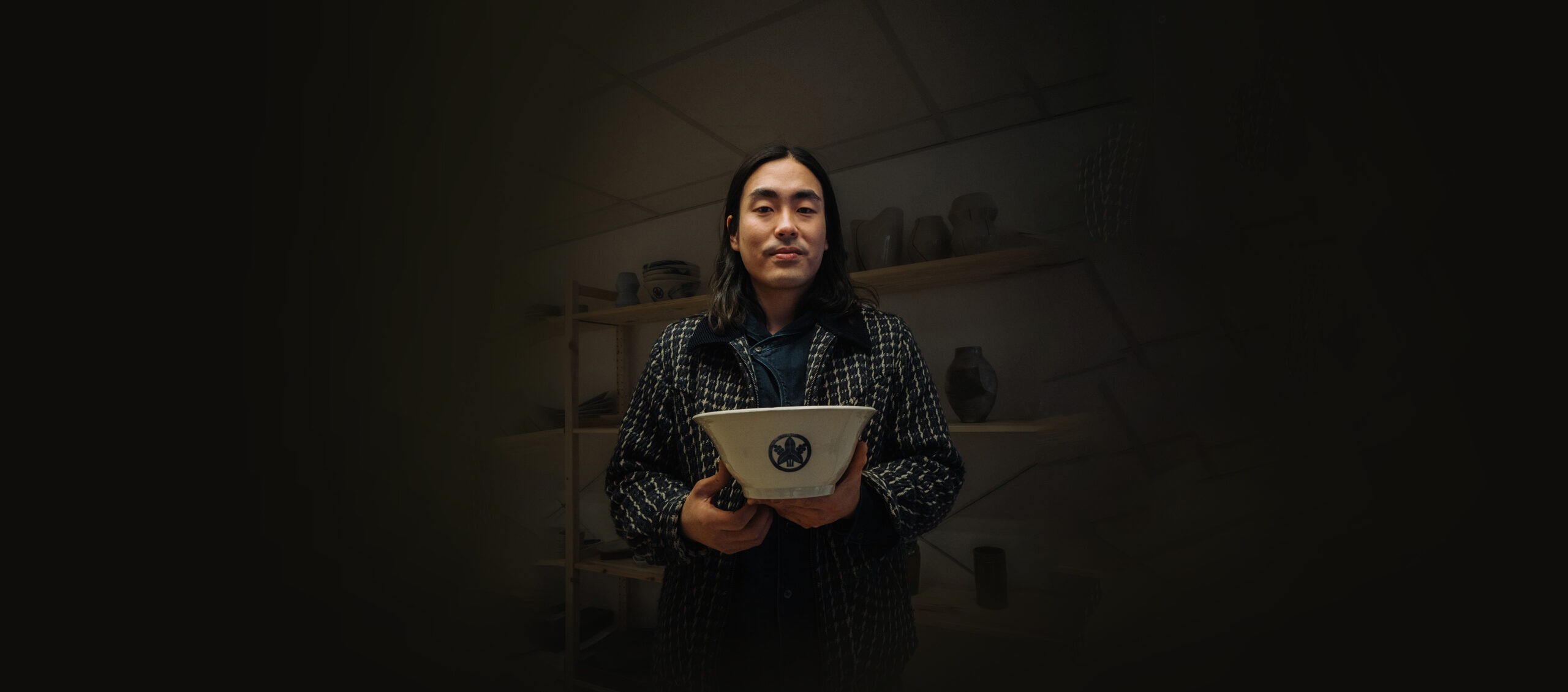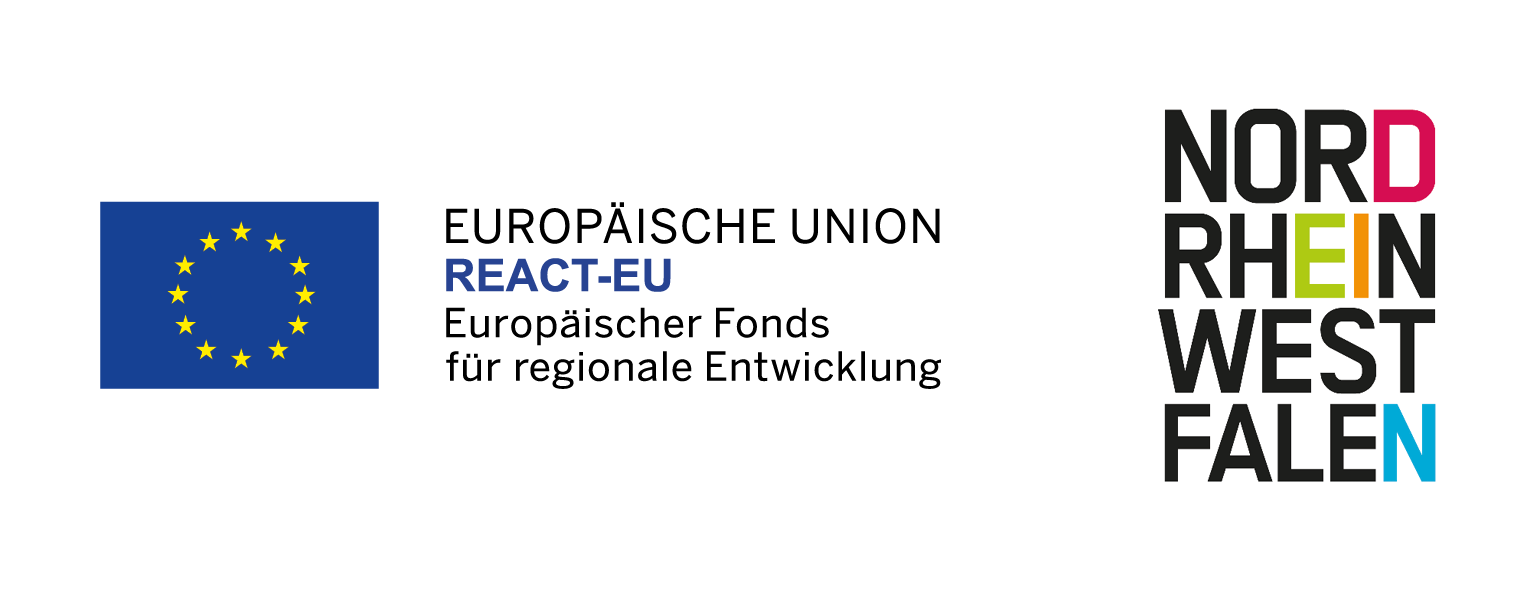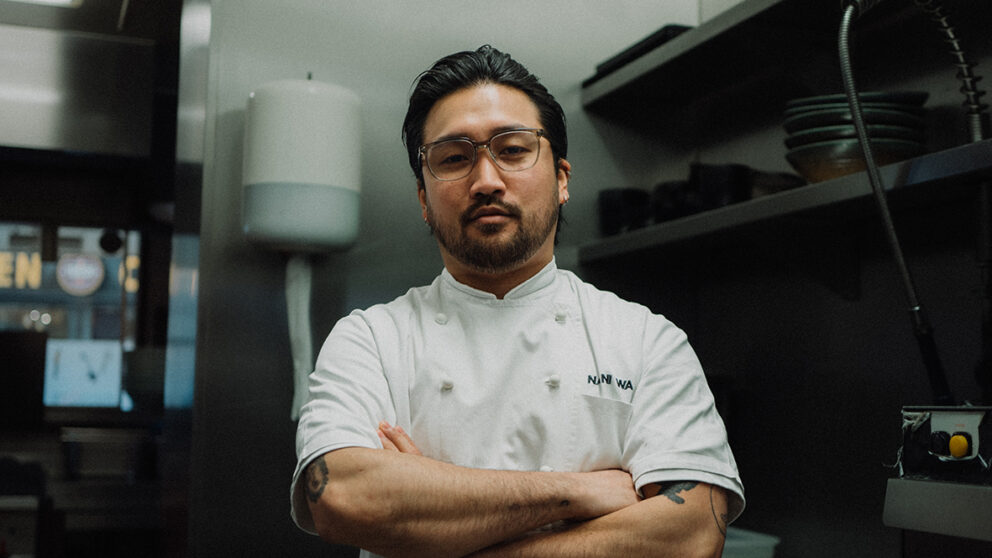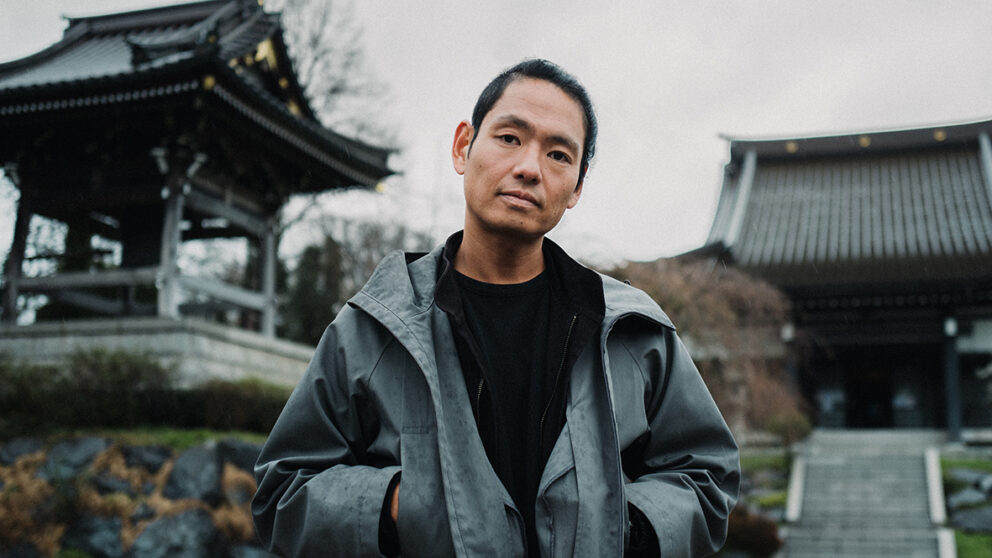
“I don’t find ceramics meditative.”

“I don’t find ceramics meditative.”
An interview with Jimu Kobayashi
Jimu Kobayashi, born and raised in Düsseldorf, is a ceramics artist with a degree in industrial design. We met him at his studio in Flingern. In this interview, Jimu explains the influence of his family history on his artistic work.
At which moments is your art influenced by your Japanese side?
For me, it begins with the design aesthetic. I deliberately keep it rather delicate and restrained, using a minimalistic approach. I prefer my pieces not to be too visually aggressive in a spatial context. When it comes to colour, I also work rather ‘quietly’. For example, when I paint items in plain tones and only add the ‘loudest’ element at the final step – a single, large brushstroke across the whole piece.
I used to try very consciously to avoid letting the Japanese aesthetic influence my work too much, because I didn’t want to feel like a cliché. My work was meant to speak for itself. But with time, I learned that this cultural heritage and my own artistic expression are not mutually exclusive. I think by now that I’m unable to switch off the effect of the Japanese aesthetic, and I wouldn’t want to.
How did you get into art?
When I first came into contact with the craft, I immediately felt that I had a knack for it, as well as the requisite diligence. I had clear ideas, and it wasn’t very long before I could form the clay into the shapes I’d envisaged. That’s not to say that it all came easily to me. What I really like about ceramics are the enormous challenges involved. Anyone who’s ever worked with clay on a potter’s wheel, for example, knows how difficult it can be initially to shape the material in the way that you’ve planned, and how frustrating it can get when you’re not patient enough. But this experience allows you to grow, and you learn to submit to the process. You can’t lose your focus. That may sound pretty meditative, but that’s not how I would describe it, at least not in a relaxing sense! Rather, it is more of an inner struggle each time, a problem that I’m trying to solve.
What role, if any, does your family history play in your art?
A few years ago, when I decided to incorporate our family crest into my ceramics, it was partly an attempt to connect to my cultural roots. You can also see the crest at Naniwa, our family restaurant, where it adorns the ramen bowls.
Historically, a traditional family crest has always had great significance in Japan. You can’t just pick one either. Often, you have to look pretty closely and far back in your family history to find out what it looks like and what it means. We were lucky in that we have a well documented family tree. So we know that our ancestors lived on the land in Niigata for generations and used to be a highly respected rice farming family.
Was there never a plan for you to join the family business?
I did actually work at Naniwa for a few years while I was studying industrial design, both in the kitchen and serving. Of course my family, and I myself, kept wondering whether my brother Masao and I were going to take over the business together at some point. But I really don’t think it would suit me. Working there part-time gave me valuable experience of the restaurant business, but at the same time I realised what utterly backbreaking work it is. Our father is a classic workaholic. For the first few years after he took over the restaurant from the previous owner in the early 1990s, he used to spend the night there. He wanted to be there as early as possible the next day to work more efficiently. I greatly admire my father’s story, especially in the context of his life as a young immigrant from Japan. But I saw my own future in art and design pretty early on.
Title image: Düsseldorf Tourism
This article is supported by REACT-EU.




